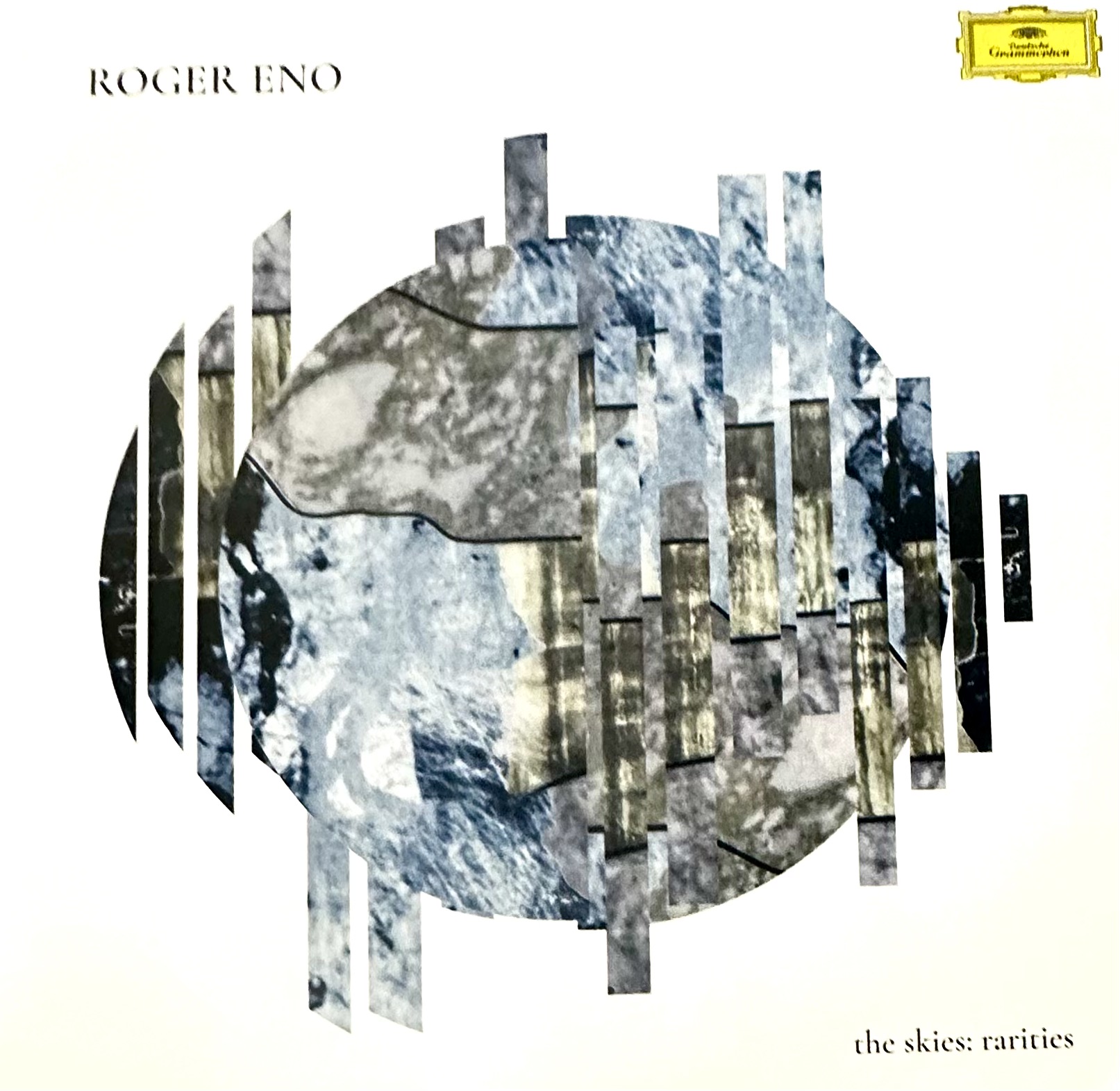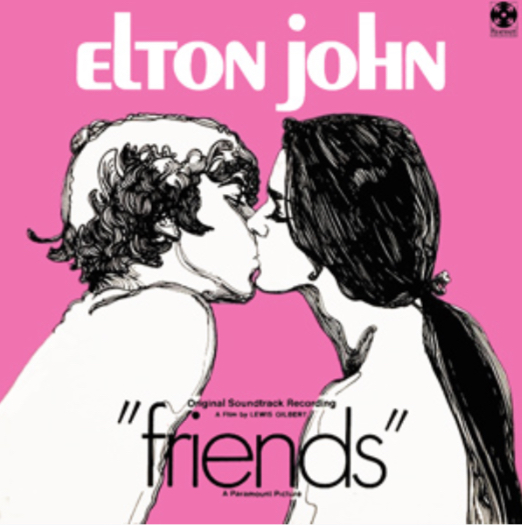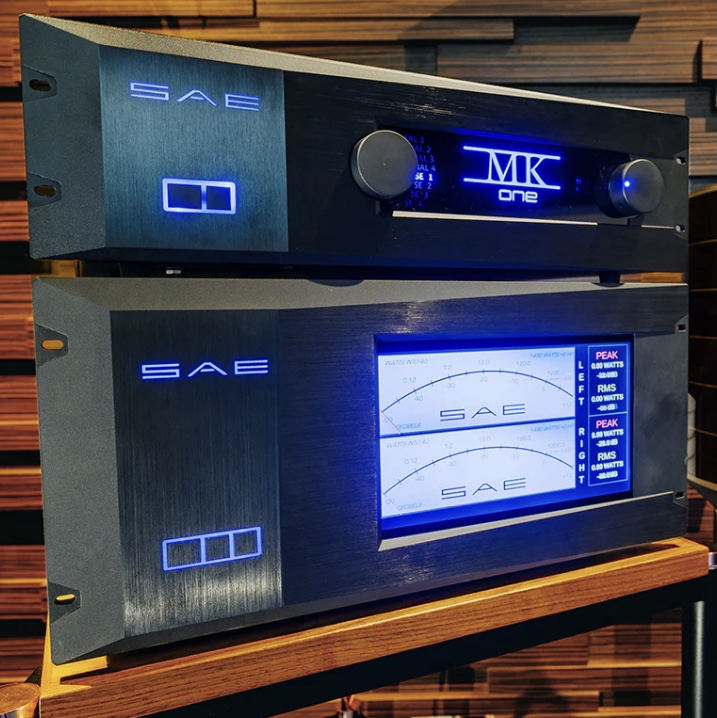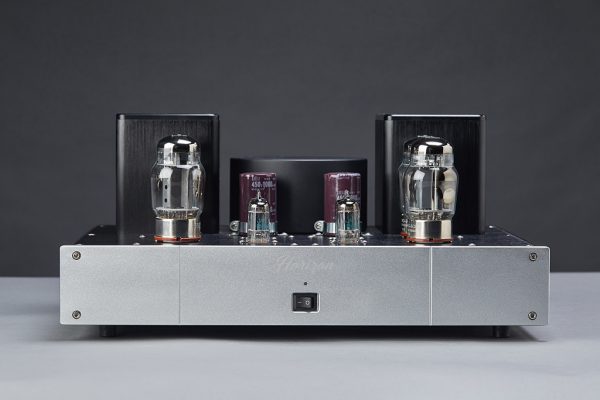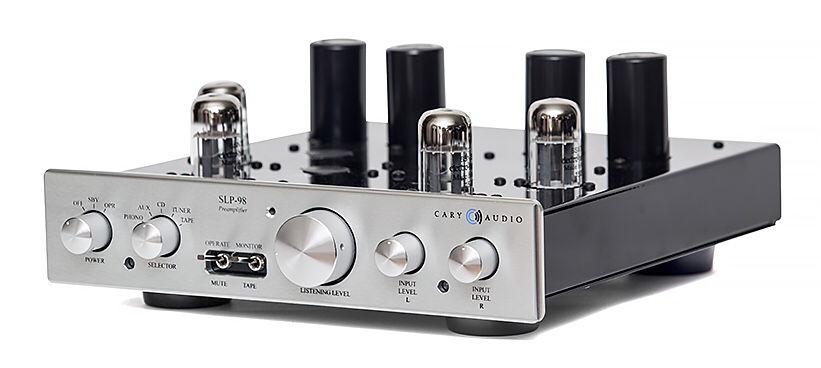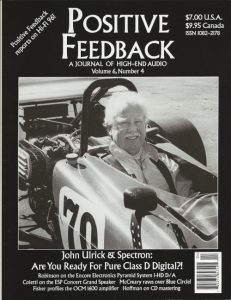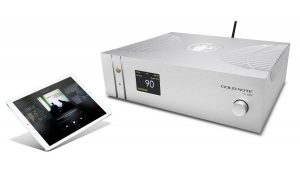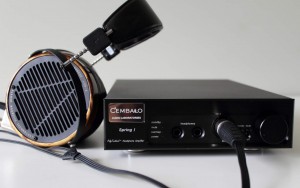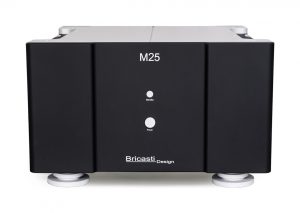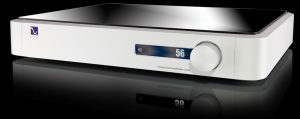I was recently introduced to Mytek, a company out of Brooklyn, NY that specializes in digital electronics. Not being known for being the go-to guy for digital I thought the opportunity to try something completely different was something I could not pass up. Suffice it to say right up front that I am glad that I didn't pass. Mytek HIFI produces some impressive gear. This is a review of both units.
The very first thing that caught my attention was the diminutive size of both the preamp/DAC and the amplifier. Both pieces at 8 x 8.5 x 1.74 inches in size meant they were physically dwarfed in my system by everything except the phono cartridges. Despite the small size these pieces are designed to be extremely attractive. Aesthetics should always be important to any audiophile... case in point, when they were set up Paula looked at them and her first comment was, "Why can't all your gear be this compact and attractive? It would take up so much less space!" Thanks Mytek! My response was a very simple, "This is my space!" That issue being addressed, I went on about my business setting the units in my system and running them through a burn in phase. Finding a space presented absolutely zero problem, and I didn't need backup to unbox and place either unit. Refreshing!
Who ever said size doesn't matter must have been thinking about these two items. They pack a ton of features and performance into the relatively tiny size. I have to admit to going through various phases of seeking a smaller, almost invisible system, to lusting after monster size amps and speakers. Probably an issue of compensation, but as I become older, and my wife and I discuss the inevitable downsizing, smaller electronics are finding their way onto my radar once again, so the timing of this review was serendipitous to be sure.
I am varying my normal flow and placing the manufacturer specs and comments to the bottom of the review. Those who first want to know the specs, please scroll down and you will find them there. For this review the subjective comments will flow first.
I decided to go with interjecting the amplifier into my system first to see how it sounded as a stand alone power amplifier. That was pretty straight forward and easy. Nothing like wrestling a 150lb set of tube monoblocks into place. My back was very thankful.
Once all was connected I began to run the Brooklyn amplifier through its paces. I was almost immediately shocked and awed at the delivery that this little box threw out. Hard to believe the Brooklyn was pushing 300 watts per channel into my 4 ohm Von Schweikerts! This amplifier pushed the system at a very impressive level of sound pressure, depth and width of soundstage, and detail. Cleaner than any amplifier I have listened to in a while without being sterile. That is a hat trick, and has always been the bane of meshing my hearing preferences with the digital world. Generally speaking I found solid state and digital products to be a bit strident and analytical in a way I personally don't find pleasant. Not the fault of the electronics, but a function of my hearing. The first thought that ran through my feeble brain was, "This isn't what I was expecting. These are rather smooth with just enough warmth to render them pleasing to my ears." That is polite way of saying, "Wow this doesn't sound like crap!" Never, ever, judge a book by its cover Gary, and never ever say never! (Never say never can never be ruled out completely. The saying should be, "always be prudent in your use of 'never' unless it is to say 'never say always'.")
The longer I played music through the Mytek Brooklyn the more relaxed it seemed to be, and just simply got out of the way of the music. Staying in the background and doing its job without ever once drawing attention to anything other than its size. "Is all that sound coming out of that little thing?" was the most common comment I heard from visitors during the two months it was in the system.
You want grunt? Well here you go! Extreme low frequencies were produced with a staggering level of pressure, clarity, and detail that I rarely get out of my tube amps. At one point I actually bi-wired my system with the Mytek Brooklyn running the subs, and my Quicksilvers running the rest. Holy Smokes! That was fun!
As a full range amplifier, the Brooklyn acquitted itself admirably. It delivered female vocal midranges with a smoothness that matched anything I have listened to sans a 300B tube amplifier. It was close but lacked the immediacy of that particular tube. Everything else was there. Sibilance, tonal texture, breathiness was all there and quite pleasing. Highs had sparkle and great texture and decay without any grain or edginess at all. The low frequencies I have already addressed.
I pulled out an Original Master Recording of Jethro Tull's Aqualung (MFSL 1-061) and played side one in its entirety. This is a great album to use for full range testing. The song "Aqualung" contains so much changing texture in the vocals. It is a real ride. When Ian Anderson changes the vocals to run through a bullhorn effect, the delivery is almost a bit painful. It is so strident and sharp. With an amplifier that is too analytical it can be almost unbearable. The Mytek Brooklyn added nothing to the nature of the passage, but rather sent the signal through without any additional pump up in the shrill factor. the same applies to Martin Barre's treble boosted lead guitar soloing. Clive Bunker's pulsating drums and Jeffery Hammond's bass lays down a great underpinning to Martin's guitar and Ian's sailing flute! Speaking of Ian's flute, there is no disputing his rather unique playing. the breathiness, chuffs, and other vocal additions to the flute always fascinated me. I found that his approach was so interesting and made the flute a true roach and roll instrument. All of that just jumps out of the record. Ian's acoustic guitar work on "Cheap Day Return" is both powerful and delicate. All that comes through the Mytek Brooklyn exactly the way it should. You can hear and feel the attack on the strings change in urgency to produce the swing from forceful to tender so clearly and with such detail. This song followed by "Mother Goose" shows the band's ability to change up in an instant. The baroque stylings, great percussion, and blend of acoustics guitar with a more "Bouree like" flute performance made this one of my all time favorite Tull songs. Martin's electric guitar bits just made it all work so well. Finishing off the trio of acoustic guitar songs with "Wondering Aloud" made the acoustic suite trilogy so enjoyable to experience. The addition of a string arrangement in the middle of the song is exactly as restrained, yet lilting as it was intended to be. The Mytek Brooklyn presented it all as well as I could have possibly expected. I was entranced to say the least. Jethro Tull at their finest! It was a bit more strident than a full tube presentation, but not the least bit unpleasant and distracting. Wonderful is a good word to apply here.
I pushed a good deal of music through the amplifier as a stand alone amplifier in the system and used CDs, reel to reel tape, and digital streaming to accomplish it all. In every format the Mytek Brooklyn just got out of the way of the music and delivered superb sound throughout the time I used it. On Mytek's website they do not show a separate price for the amplifier only. The DAC+ is $2195 and the bundle of the two is $4295 hence the $2100 I quote at the top for the amplifier.
Where it all comes into its own is as a system of the Brooklyn amplifier and Brooklyn DAC+! The DAC + operated as a headphone amplifier, DAC, and preamp. The front panel has a back-lit logo, as does the power amplifier, with its color and brightness user adjustable. Pretty neat little feature. The panel has two outputs for headphones. The left connects unbalanced headphones in absolute phase, whereas the right jack creates absolute out of phase connection. Other controls include function buttons for display, options and device settings, input and other features, an OLED display, and finally the rotary encoder knob with the dual function of controlling volume as well as menu navigation. There is a lot going on up there.
The unit provides for the following inputs/outputs on the back panel: balanced XLR stereo analog outputs, RCA stereo outputs, RCA stereo inputs (one set), AES/EBU input, two S/PDIF coaxial inputs, Mytek proprietary USB 2.0 Class 2 and toslink input, optical input, wordclock BNC input, phono ground, optional external DC / battery power input, and a trigger I/O connector along with power cord input.Whew that is a whole lot of stuff!
Interestingly the unit can be remotely controlled by the same Apple remote that runs an Apple TV unit. The remote comes with the DAC+ along with a dedicated USB 2.0 cable owner's manual and gain adjustment jumpers.
I have to admit that I did not utilize every single aspect of the DAC+ as I am not an end user that would use all of the computer interface features, and kept my use to the RCA inputs and digital streaming. The owner's manual comes with complete instructions on connecting the unit to your computer. It is optimized to run with Windows, Mac OS, and Linux. There is a quick start option that I followed, it allows you to plug in and immediately use the DAC+ to process a CD player or digital input such as a streaming device.
I did just that. Once you play around with the controls via the switches and rotary control it becomes a breeze to operate.
Playback mated to the Brooklyn amplifier was similar to the playback I had when using the amplifier alone in my system. What was apparent to me initially was the total absence of any background sound when the two were used together. No tubes anywhere in the chain led to an absolutely black background. This made for a a very transparent, extremely neutral presentation of music, and a bit more lean and cooler overall sound. Mind you, any time you go from tube influenced system electronics to straight digital that will be the case. As time wore on, this became less and less of an issue and ultimately no issue at all.
Where I really noticed the absence of any background noise was on tracks that were more sparsely recorded and produced. The song "Gravity" by Amy Holland with David Crosby and David Pack contributing to a three part harmony accompanied basically by acoustic guitar and some synthesizer is a great example. From the album Light On My Path, this song is a softly sung story of breaking away from someone and getting to a place that you are free from their constant pulling or gravity. Amy is a successful performer and songwriter who just happens to be married to Michael MCDonald, who appears elsewhere on the album. Recommended listening!
The performance of "Gravity" was presented with a true sense of the frustrating emotions of trying to break free of a toxic situation and take a new path. The vocal presentation was delicate and balanced. I found myself feeling a deep and profound empathy for the writer of the tune, and understanding from having been there myself. All of that is only possible if the equipment doesn't get in the way by interjecting itself in the presentation. That speaks volumes for the Mytek Brooklyn's ability to deliver the music without colorations or distractions. Captivating is another adjective that I could use. I found myself letting the whole album run through because of this.
Light On My Path runs the path from folky, to pop tunes, to jazz, and every single bit of it was delightful through the Mytek duo. The song "Holiday" transported me to a smoky little bar where Amy was backed by a jazz quintet augmented by some tasteful strings. The piano solo by Pat Coil came through with a delicate touch, and the requisite percussiveness of the Keys's tricking the strings. Kerry Marx's tasteful guitar solo that followed Pat's turn was so sweet, and the transition between the two instruments was absolutely seamless in the presentation. Amy's vocals were sublime and poignant in the delivery. So smooth and steady. Creamy is the best description. Breathy in this delivery, and it cuts through to deliver the sadness of the ending of a short affair. I put a lot of value on delivering not only the raw music, but the feel and emotion that the artist is intending to share. This is something the Brooklyn duo did with ease. This was unexpected, and the surprise was delightful.
When a system delivers the music in a way that also slams home the emotion, pain, suffering, or joy, you know you are getting the complete package. When it can do all that, the Mytek duo can for less than $5K, well that just makes it rather a serious bargain. This is what I found with the Mytek Brooklyn duo, and can highly recommend them if this is the type of system you are looking for, and it fits in your budget. Add a nice set of speakers and some front end pieces, and you have a seriously strong budget or entry level system with incredible flexibility
Mytek HIFI Brooklyn DAC
Retail price: $2195
Mytek HIFI Brooklyn Stereo Power amplifier
Retail price: $2100
Manufacturer:
Mytek HIFI US Headquarters
148 India St. 1 FL
Brooklyn, NY 11222
Phone: 347.384.2687
Web: https://mytekdigital.com/hifi/
Email: [email protected]








